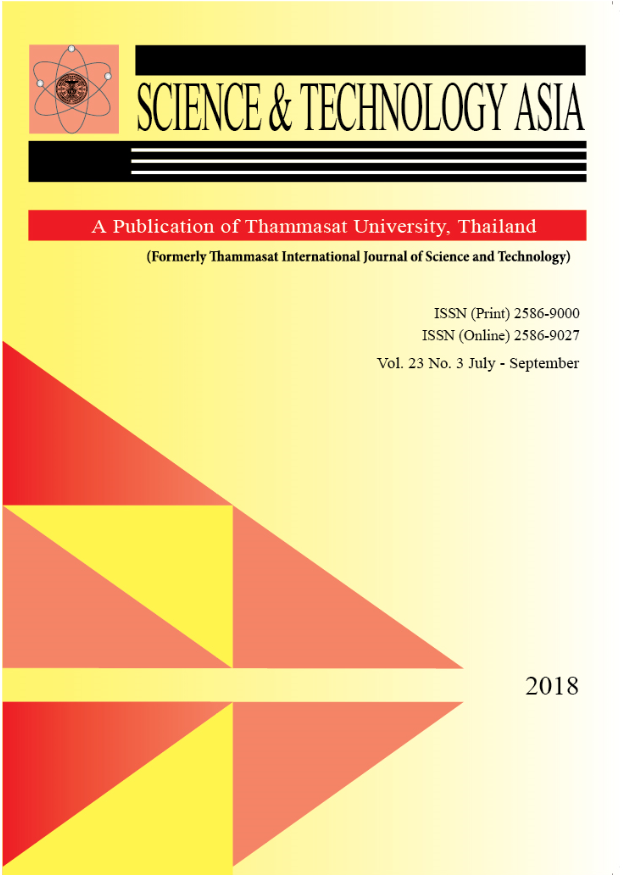Adsorption of Direct Red 83 Using Cetyltrimethylammonium Bromide Modified Water Hyacinth
Main Article Content
Abstract
As of present, water pollution that is caused by textile dyeing factories is one of the primary concerns in Thailand. Wastewater is contaminated with dyes, which results in an unpleasant watercolor. This research emphasized on the study of the adsorption of Direct Red 83 dye through the use of water hyacinths, which are abundant in number and can be easily obtained. Prior to the adsorption, water hyacinths were modified with cetyltrimetylammonium bromide (CTAB). The value of pHpzc of the adsorbent was 5.15. The adsorption was most effective at the pH value of 3. After increasing the amount of adsorbent and the temperature for water treatment, the percentage of dye removal would increase. However, if the concentration of dye increases, the percentage of dye removal would decrease. Upon the addition of electrolytes into the Wastewater that contained this particular type of dye, it was found that calcium salts lowered the percentage of dye removal to a greater extent than sodium salts. The process of adsorption was in accordance with Langmuir adsorption model, with qe value equals to 66.2252 milligrams per gram, KL value equals to 1.6064 liters per milligram, and RL value equals to 0.0062. Based on Dubinin-Radushkevich equation, the obtained E value represents physical adsorption. According to Redlich-Peterson equation, bR equals to 1.0797, which supported the fact that adsorption conformed to Langmuir model. This adsorption was in accordance with the model of a second-order reaction. When the temperature of the Wastewater increases, K2 value would increase. When the concentration of dye increases, qe value would increase.


